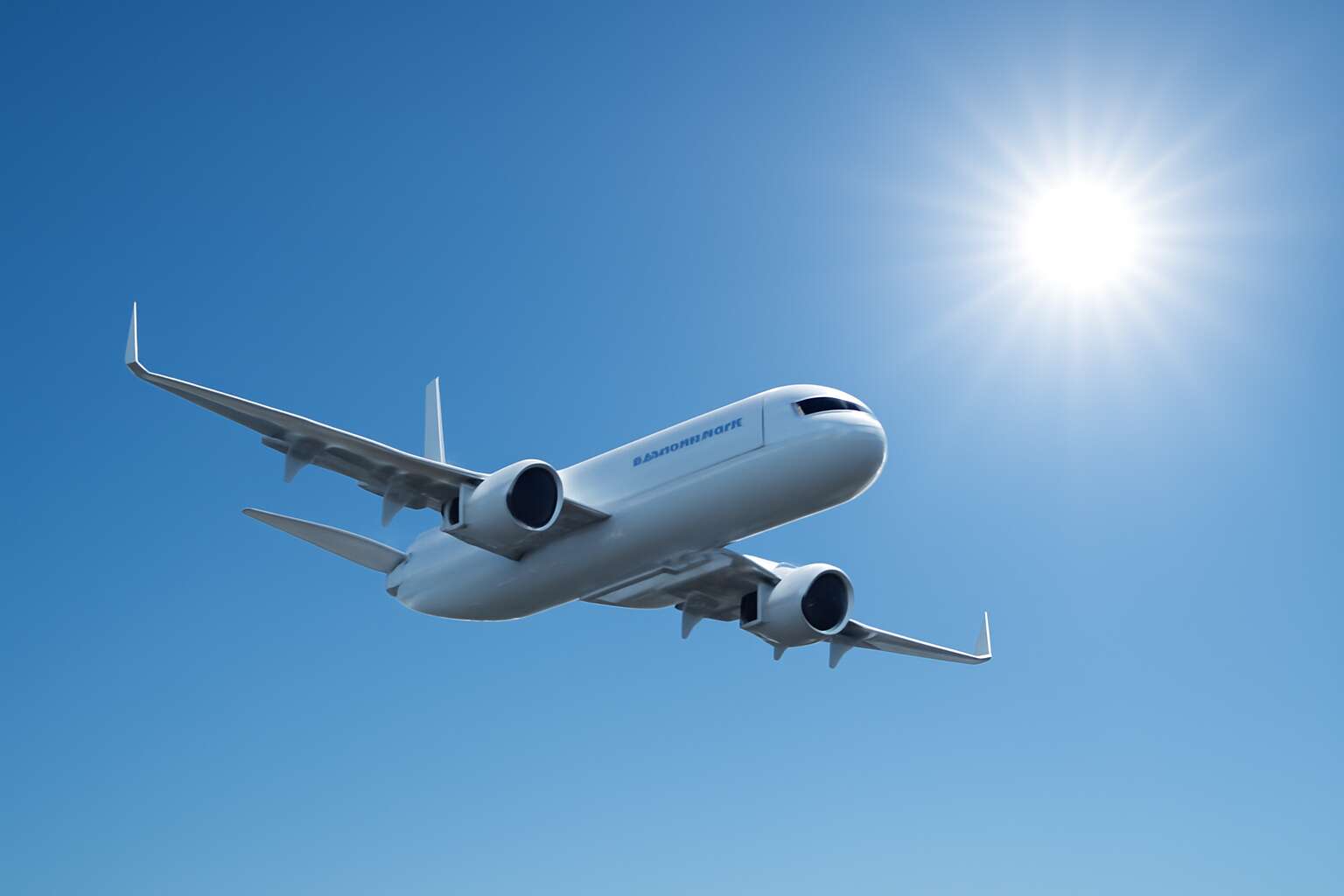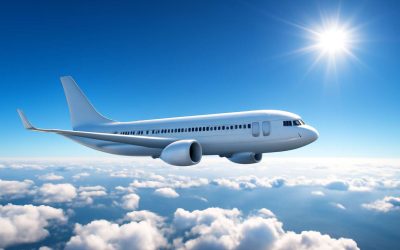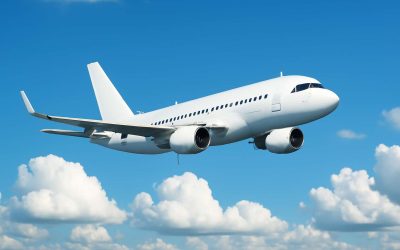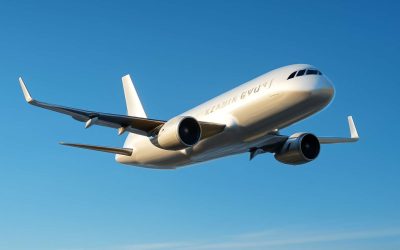Fundamentals of Flight
Understanding Lift – How aeroplanes generate upward force to overcome gravity
Understanding why aeroplanes fly requires more than just grasping basic mechanics; it demands a deep appreciation for the delicate balance of forces at play. At the heart of this marvel of engineering lies lift—an upward force that defies gravity, allowing aircraft to soar through the skies. But how exactly do aeroplanes generate this lift? The secret resides in the aerodynamic design of their wings, which manipulate airflow to produce a pressure difference.
When air flows over and under a wing, it moves faster over the curved upper surface, creating lower pressure compared to the underside. This pressure difference results in lift, the fundamental reason why aeroplanes fly. The phenomenon is intricately tied to the shape of the wing, known as an airfoil, which is crafted to maximise this effect. Ultimately, the real question is: what fuels this interaction, turning a mere machine into a vessel of human aspiration? The answer lies in the mastery of aerodynamics and the precise engineering that makes it all possible.
The Role of Aerodynamics – The importance of shape and design in flight efficiency
The secret behind why aeroplanes fly lies not only in physics but in artful engineering. The role of aerodynamics is paramount, transforming simple metal structures into soaring marvels of human ingenuity. Every curve and contour of an aircraft’s design is a testament to centuries of aerodynamic mastery, crafted to optimise flight efficiency and stability.
At the heart of this science is the shape and design of the wings. An exquisitely engineered airfoil ensures that air flows smoothly over the surface, creating the perfect conditions for lift. The wings are meticulously designed to manipulate airflow, balancing forces and reducing drag—making the difference between a smooth glide and a turbulent ride.
- Wings with optimal curvature
- Streamlined fuselage
- Precision-engineered tail surfaces
These elements work together, illustrating why aeroplanes fly with such grace and precision.
Understanding the fundamentals of flight reveals that the journey from takeoff to cruising altitude is a ballet of aerodynamic principles. The shape and design of an aircraft are crucial, turning scientific laws into a seamless flight experience. It’s a marvel that continues to inspire wonder, echoing the timeless question of why aeroplanes fly in the first place. Truly, it’s a dance of design, physics, and relentless human curiosity.
Thrust and Drag – How engines produce forward motion and overcome air resistance
One might imagine that the secret behind why aeroplanes fly hinges solely on their engines, but it’s a far more elegant ballet of forces than mere propulsion. Thrust, the mighty push from jet engines or propellers, propels the aircraft forward with relentless determination, slicing through the air like a blade through silk. Yet, just as vital is the counteracting force of drag—air resistance that seeks to slow the aircraft down at every turn.
To truly appreciate why aeroplanes fly, consider this: engines must generate enough thrust to overcome drag, allowing the aircraft to accelerate and eventually reach cruising speed. This delicate tug-of-war is central to flight and involves a sophisticated interplay of design and physics. The aerodynamic shape of the aircraft minimizes drag, making the journey smoother and more fuel-efficient. In essence, the aircraft’s engines are not just pushing it forward—they’re engaged in a constant battle against the resistance of the atmosphere itself.
- Engine power produces thrust, pushing the aircraft ahead with impressive force.
- Air resistance, or drag, acts in opposition, attempting to slow the aircraft’s progress.
- Achieving the perfect balance between thrust and drag is vital for sustained flight.
Without this intricate dance, why aeroplanes fly would remain a mystery—an elegant testament to human ingenuity meeting the relentless laws of nature. It’s a captivating saga of engineering mastery, where every engine roar and streamlined contour plays a part in the miracle of flight.
Principles of Aerodynamics
Bernoulli’s Principle – The science behind pressure differences over the wing surfaces
Imagine a delicate dance of invisible forces that lifts a colossal machine into the sky—this is where Bernoulli’s Principle reveals its magic. At the heart of understanding why aeroplanes fly lies the concept that faster-moving air exerts less pressure than slower-moving air. When air flows over the curved surface of an aircraft wing, it speeds up on top, creating a pressure difference that propels the plane upward. This subtle yet powerful science underpins the entire marvel of flight.
By shaping wings with precise curves, engineers harness this pressure disparity to generate lift efficiently. The principle doesn’t just explain why aeroplanes fly; it unlocks the secrets of how they can glide seamlessly through the sky with such grace. It’s a testament to human ingenuity that this elegant physics keeps us soaring above clouds, turning complex theories into the everyday wonder of flight.
Angle of Attack – How the wing’s positioning affects lift
In the grand theatre of flight, the angle of attack acts as the maestro, directing the symphony of lift and motion. It is this critical positioning of the wing relative to oncoming air that determines how effectively an aeroplane can rise into the heavens. When the wing tilts at just the right angle, it catches the air like a skilled sailor catching the wind, generating the upward force necessary for sustained flight.
Imagine the wing as a majestic sail, its angle of attack adjusting to harness the invisible currents of the sky. Too steep a tilt, and the airflow can become turbulent, risking a stall. Too shallow, and the lift may falter, leaving the aircraft stranded in its descent. This delicate balance is the secret behind why aeroplanes fly so gracefully—each angle carefully calibrated for optimal performance.
To truly appreciate the magic, consider how pilots and engineers manipulate this angle.
- The pilot tilts the nose upward during ascent, increasing the angle of attack to generate more lift.
- During descent, they decrease the angle, easing the aircraft back into controlled flight.
This orchestrated dance of positioning ensures that every flight is a harmonious blend of physics and finesse—fuelled by the age-old question of why aeroplanes fly.
Flow of Air Around Wings – Understanding the airflow patterns that facilitate flight
The secret behind the majestic ascent of aircraft lies in the intricate dance of airflow around the wings, a ballet choreographed by the unseen forces of nature. As the plane slices through the sky, air splits and flows, shaping patterns that determine whether the craft soars or stalls. The wings act as gentle sculptors, guiding the flow in a manner that creates regions of varying pressure—an invisible tug-of-war that sustains flight.
Understanding the flow of air around wings reveals a fascinating tapestry of physics, where the principles of aerodynamics come alive. Streamlined curves and precise angles manipulate the air’s journey, fostering smooth, laminar streams that cling to the surface and turbulent eddies that energise lift. The airflow behaves like a living entity, responding to every contour and tilt with exquisite sensitivity, ensuring that each flight is a testament to engineering mastery.
In essence, it is the harmony of airflow patterns—carefully controlled and optimised—that explains why aeroplanes fly, transforming science into poetry in motion.
The Physics Behind Aeroplane Flight
Newton’s Laws of Motion – Applying physics to understand flight mechanics
Imagine a vast, invisible ballet where forces dance in perfect harmony — this is the physics behind why aeroplanes fly. At the heart of this aerial symphony lies Newton’s Laws of Motion, guiding every twist and turn in the sky. The fundamental principle that an object in motion stays in motion, unless acted upon by an external force, explains how a plane keeps streaking forward once thrust is applied. Each component, from the engines to the wings, works together to create a delicate balance of forces that lift, propel, and stabilise the aircraft.
When examining why aeroplanes fly, it’s essential to understand the interaction between thrust, drag, and the aeroplane’s mass. Newton’s third law — for every action, there is an equal and opposite reaction — manifests vividly in the way engines push air backwards, generating a forward thrust that propels the aircraft. This intricate interplay of physics ensures that the aircraft overcomes air resistance while maintaining its velocity, all orchestrated through a precise application of Newton’s Laws of Motion. Truly, the magic of flight is a marvel of natural laws in perfect synchrony.
Conservation of Momentum – How momentum conservation enables sustained flight
Imagine a tug-of-war in mid-air, where momentum isn’t just a fancy physics term but the secret sauce enabling sustained flight. The conservation of momentum — a core principle in physics — ensures that once an aeroplane is in motion, it keeps going, unless something forces it to stop or change course. This fundamental law states that in a closed system, the total momentum remains constant. When an aircraft’s engines push against the air, they create a reaction that propels the plane forward, maintaining its momentum over kilometres of sky.
In practice, the aircraft continually exchanges momentum with the surrounding air — a delicate dance that keeps it aloft and cruising effortlessly. Without this principle, even the most advanced jets would struggle to stay airborne for long. To understand why aeroplanes fly, it’s vital to grasp how the conservation of momentum keeps the aircraft moving smoothly through the sky, overcoming tiny yet relentless forces like air resistance. This invisible but mighty law is the backbone of sustained flight, making the difference between a smooth journey and a plummeting descent.
Balance of Forces – Why lift, weight, thrust, and drag need to be in equilibrium
Understanding why aeroplanes fly involves more than just engines and wings; it’s a complex ballet of forces that must stay perfectly balanced. When an aircraft takes to the sky, it is governed by four fundamental forces: lift, weight, thrust, and drag. For sustained flight, these forces need to be in a delicate equilibrium—any imbalance can cause the plane to ascend, descend, slow down, or veer off course.
Lift must counteract weight, while thrust must overcome drag. If any of these forces become unbalanced, the aircraft’s flight path is affected. For example, increased thrust can accelerate the plane, but if lift isn’t sufficient, the plane will struggle to stay airborne. Conversely, excessive drag can slow the aircraft, forcing the engines to work harder. The intricate interplay of these forces is what makes understanding why aeroplanes fly so fascinating—it’s physics in perfect harmony, enabling the aircraft to glide smoothly through the sky.
Components Enabling Flight
Wings and Lift Elements – Design features that maximize lift
When considering why aeroplanes fly, it’s essential to understand the intricate components that enable their ascent into the skies. The wings and lift elements are marvels of engineering, meticulously designed to maximise lift and provide the necessary force to counteract gravity. These features are not just about shape; they are about creating an aerodynamic environment where air flows efficiently around the structure.
The wings, often equipped with flaps and slats, are crafted to optimise airflow. Their curvature, known as camber, helps generate additional lift by manipulating the air pressure above and below the wing surface. Additionally, the angle of attack—the tilt of the wing relative to the oncoming airflow—plays a pivotal role in this process. When the angle increases, so does the lift, up to a certain point, beyond which stall can occur.
Enhancing this process are lift elements like vortex generators and winglets, which reduce drag and improve airflow. These design features work together in harmony, ensuring that the aeroplane remains airborne. It’s a delicate balance, where every component contributes to why aeroplanes fly—transforming complex physics into reliable, soaring flight.
Engines and Thrust – Different engine types and their role in propulsion
At the core of every flight lies an intricate dance of propulsion and physics—a ballet performed by engines that thrust aircraft through the atmosphere with relentless precision. The question of why aeroplanes fly cannot be fully appreciated without understanding these vital propulsion systems. Different engine types, from turbojets to turbofans, each serve a unique purpose in transforming fuel into forward momentum, seamlessly overcoming air resistance and inertia.
Jet engines, the marvels of modern aeronautical engineering, operate by compressing incoming air, mixing it with fuel, and igniting the mixture to produce a high-velocity exhaust plume. Turboprop engines, on the other hand, combine the efficiency of a propeller with turbine technology, making them ideal for shorter flights or regional routes. Both types generate the thrust needed to push the aircraft into the airflow where lift can take over—an elegant synergy that explains why aeroplanes fly with such remarkable consistency.
- Propulsion systems are designed to produce continuous thrust, which propels the aircraft forward, creating the necessary conditions for lift to develop through airflow over the wings.
- Engines must also manage the delicate balance of thrust and drag, ensuring that the aircraft maintains optimal speed and altitude throughout its journey.
Indeed, the complexity behind engine design and their role in propulsion underscores the marvel of flight—an unceasing quest to conquer the skies, revealing why aeroplanes fly in a symphony of engineering mastery and physical laws. It’s a testament to human ingenuity that, with every flight, we harness the power of engines to turn the intangible dream of flight into tangible reality.
Fuselage and Stability – How structure and design contribute to stable flight
The architecture of flight is a delicate symphony of engineering and artistry, where every component plays a vital role in the mysterious ballet that is airborne stability. The fuselage, often overlooked, acts as the vessel’s backbone—its strength and streamlined design enabling it to withstand the relentless forces of the sky. It must be resilient yet aerodynamic, cutting through the clouds with quiet grace, while maintaining the delicate equilibrium of weight and balance.
Moreover, the stability of an aeroplane in flight hinges on the meticulous arrangement of its structural elements. The tail assembly, for example, serves as the silent guardian of directional control, providing the necessary pitch and yaw adjustments that keep the aircraft steady amidst turbulent whispers of wind. The wings, with their carefully crafted lift elements, generate the upward force that defies gravity, all while the fuselage remains a sanctuary of design precision.
In the grand design of why aeroplanes fly, the synergy of these structural components ensures that the aircraft remains in harmonious balance, even when the skies turn dark and unforgiving. Such mastery of form and function underscores the profound ingenuity behind every flight—where stability and structure are the unseen guardians of the perpetual voyage through the heavens.
Why Do Aeroplanes Need to Fly?
Transportation of Passengers and Cargo – Economic and practical reasons for flight
Ever wonder why aeroplanes fly? It’s not just a matter of metal wings and roaring engines; it’s a sophisticated ballet of physics, engineering, and a dash of daring. At its core, the reason aeroplanes fly is to facilitate the transportation of passengers and cargo across vast distances efficiently. Without aircraft, global connectivity would be painfully slow and painfully expensive, turning a quick trip into a tedious odyssey.
The economic and practical reasons for flight are clear: they enable swift movement of people and goods, making international business and tourism possible at a pace that keeps the world ticking. Whether it’s a business executive jetting off to a crucial meeting or a container filled with essential supplies, aeroplanes serve as the arteries of modern life. This is why understanding why aeroplanes fly is more than just curiosity; it’s about appreciating how they keep the world spinning.
- Speed: They cut journey times from days to hours.
- Accessibility: Remote regions become reachable.
- Economic vitality: They support global trade and tourism.
In essence, the reason aeroplanes fly is rooted in their ability to deliver practicality, efficiency, and economic benefit, making the skies not just a realm of wonder but a vital part of our daily lives. After all, without the magic of flight, the world would be a lot less connected—and a lot less interesting!
Global Connectivity – Facilitating international travel and commerce
In the grand tapestry of modern civilisation, the ability of aeroplanes to fly stands as a marvel of human ingenuity and natural law. It’s estimated that over 4.5 billion passengers travel by air annually, a testament to how vital aviation has become for global connectivity. But why aeroplanes fly is an intricate dance of physics and engineering, unlocking pathways across continents and oceans. They serve as the celestial bridges that connect distant lands, fostering not just commerce but cultural exchange as well.
Global connectivity is the heartbeat of modern life, and aeroplanes are its swiftest messengers. They facilitate international travel and commerce, making it possible for ideas, goods, and people to traverse the world in a matter of hours rather than weeks. This seamless movement of trade and tourism fuels economies, supports millions of jobs, and unites communities. Without the ability of aeroplanes to fly, the world’s interconnected web would be frayed and less vibrant.
In essence, the reason why aeroplanes fly is rooted in their capacity to unlock the world’s vast potential for communication and commerce. They carry dreams and ambitions across skies, turning distant horizons into familiar sights. As the saying goes, “The sky’s the limit,” yet it is precisely this limitlessness that fuels the ceaseless pursuit of understanding why aeroplanes fly—transforming the impossible into the everyday.
Time Efficiency – Benefits of faster travel over other transportation modes
In a world where a staggering 4.5 billion passengers take to the skies each year, the question remains: why aeroplanes fly so swiftly and seamlessly across continents? Time is of the essence, and nothing beats the speed of an aircraft when it comes to connecting distant points on a globe that’s shrinking by the day. Unlike a leisurely boat or a sluggish train, aeroplanes offer a swift corridor through the sky, slashing travel times from days to mere hours.
Faster travel isn’t just about convenience; it’s about unlocking global opportunities. Whether it’s business meetings, urgent supplies, or family reunions, aeroplanes deliver on the promise of rapid transit. This acceleration fuels economic growth, reduces logistical headaches, and transforms distant lands into neighbourly neighbours. When pondering why aeroplanes fly, it’s impossible to ignore the sheer advantage of time efficiency—making the skies the ultimate express route for the modern world.
Environmental and Technological Factors
Fuel Efficiency and Sustainability – How modern aircraft design reduces environmental impact
In an age where environmental consciousness is no longer just a buzzword but a pressing necessity, modern aircraft design takes centre stage in reducing the ecological footprint of flight. It’s fascinating to realise that advances in aerodynamics and engine technology have transformed why aeroplanes fly from merely a feat of engineering to a beacon of sustainability. The aviation industry is now investing heavily in fuel efficiency, seeking to balance the desire for global connectivity with the imperative to curb emissions.
Thanks to innovative materials and streamlined shapes, contemporary aircraft are more efficient than ever. Technologies such as winglets—those upward-curving tips on wings—are designed to minimise drag and optimise fuel consumption. Moreover, the development of quieter, more efficient engines plays an integral role in decreasing carbon emissions. Some aircraft even incorporate sustainable aviation fuels, which burn cleaner and help mitigate environmental impact. These technological factors are crucial in answering why aeroplanes fly—with a focus increasingly centred on sustainability and environmental stewardship.
Advances in Aeronautics – Emerging technologies improving flight capabilities
In the ever-evolving realm of aeronautics, emerging technologies continue to push the boundaries of how and why aeroplanes fly. Breakthroughs in materials science, such as lightweight composites, have revolutionised aircraft construction, making planes more agile and fuel-efficient. Additionally, innovative propulsion systems—like hybrid-electric engines—promise to drastically reduce emissions while maintaining power. These advancements are not just technical feats; they are vital answers to the question of why aeroplanes fly, especially in an age increasingly focused on sustainability.
Further, the integration of artificial intelligence and machine learning into flight management systems enhances safety and optimises routes, reducing fuel consumption and environmental impact. As these technologies mature, they unlock new possibilities—like adaptive aerodynamics that respond in real-time to atmospheric conditions—making flight safer, greener, and more reliable. This seamless blend of environmental and technological factors embodies the future of why aeroplanes fly, transforming air travel from simple transportation into a marvel of innovation and ecological mindfulness.
Regulations and Safety – Ensuring safe and efficient airplane operations
In the intricate ballet of flight, safety and regulation act as the steadfast choreographers, guiding every movement of an aircraft. The delicate balance of technological innovation and rigorous standards ensures that each journey through the skies is not only swift but secure. As the world becomes increasingly conscious of environmental impact, regulations now demand that aeroplanes fly with minimal emissions, pushing engineers to innovate beyond traditional boundaries.
Safety protocols are continually evolving, driven by advancements in technology that enhance aircraft monitoring and hazard detection. The integration of sophisticated systems—such as real-time data analytics and automated safety checks—ensures that every flight adheres to the highest standards. This confluence of human oversight and technological precision embodies the core reason why aeroplanes fly: to connect us swiftly while safeguarding our shared future.
Moreover, environmental regulations foster a unique synergy between safety and sustainability. Modern aircraft are now designed with eco-friendliness at their heart, employing materials and propulsion methods that reduce the carbon footprint. As the skies become more regulated and safer, the question of why aeroplanes fly transforms into a testament to our pursuit of harmony between technological mastery and ecological responsibility.




0 Comments